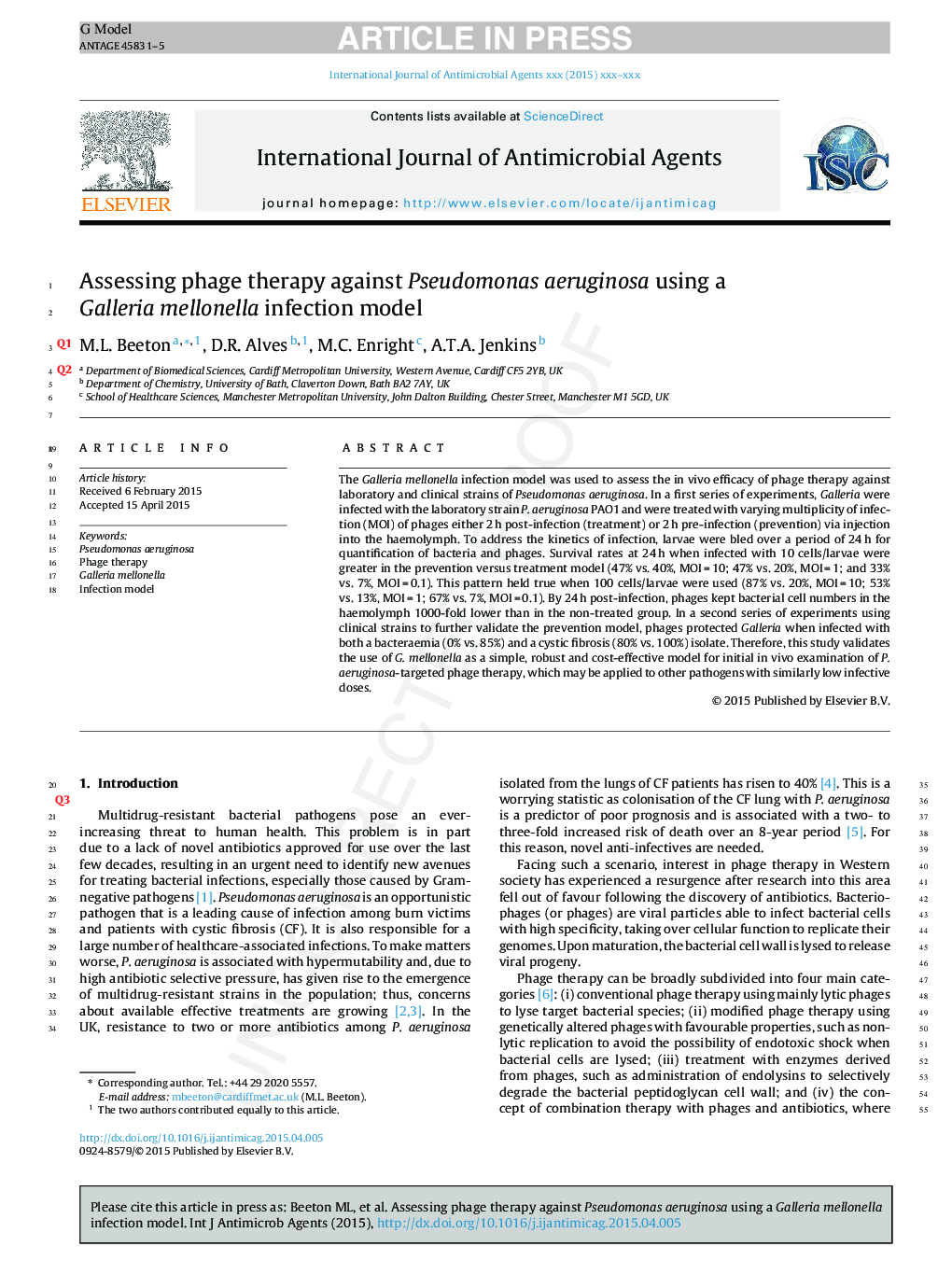| Article ID | Journal | Published Year | Pages | File Type |
|---|---|---|---|---|
| 6117719 | International Journal of Antimicrobial Agents | 2015 | 5 Pages |
Abstract
The Galleria mellonella infection model was used to assess the in vivo efficacy of phage therapy against laboratory and clinical strains of Pseudomonas aeruginosa. In a first series of experiments, Galleria were infected with the laboratory strain P. aeruginosa PAO1 and were treated with varying multiplicity of infection (MOI) of phages either 2Â h post-infection (treatment) or 2Â h pre-infection (prevention) via injection into the haemolymph. To address the kinetics of infection, larvae were bled over a period of 24Â h for quantification of bacteria and phages. Survival rates at 24Â h when infected with 10 cells/larvae were greater in the prevention versus treatment model (47% vs. 40%, MOIÂ =Â 10; 47% vs. 20%, MOIÂ =Â 1; and 33% vs. 7%, MOIÂ =Â 0.1). This pattern held true when 100 cells/larvae were used (87% vs. 20%, MOIÂ =Â 10; 53% vs. 13%, MOIÂ =Â 1; 67% vs. 7%, MOIÂ =Â 0.1). By 24Â h post-infection, phages kept bacterial cell numbers in the haemolymph 1000-fold lower than in the non-treated group. In a second series of experiments using clinical strains to further validate the prevention model, phages protected Galleria when infected with both a bacteraemia (0% vs. 85%) and a cystic fibrosis (80% vs. 100%) isolate. Therefore, this study validates the use of G. mellonella as a simple, robust and cost-effective model for initial in vivo examination of P. aeruginosa-targeted phage therapy, which may be applied to other pathogens with similarly low infective doses.
Related Topics
Life Sciences
Immunology and Microbiology
Applied Microbiology and Biotechnology
Authors
M.L. Beeton, D.R. Alves, M.C. Enright, A.T.A. Jenkins,
